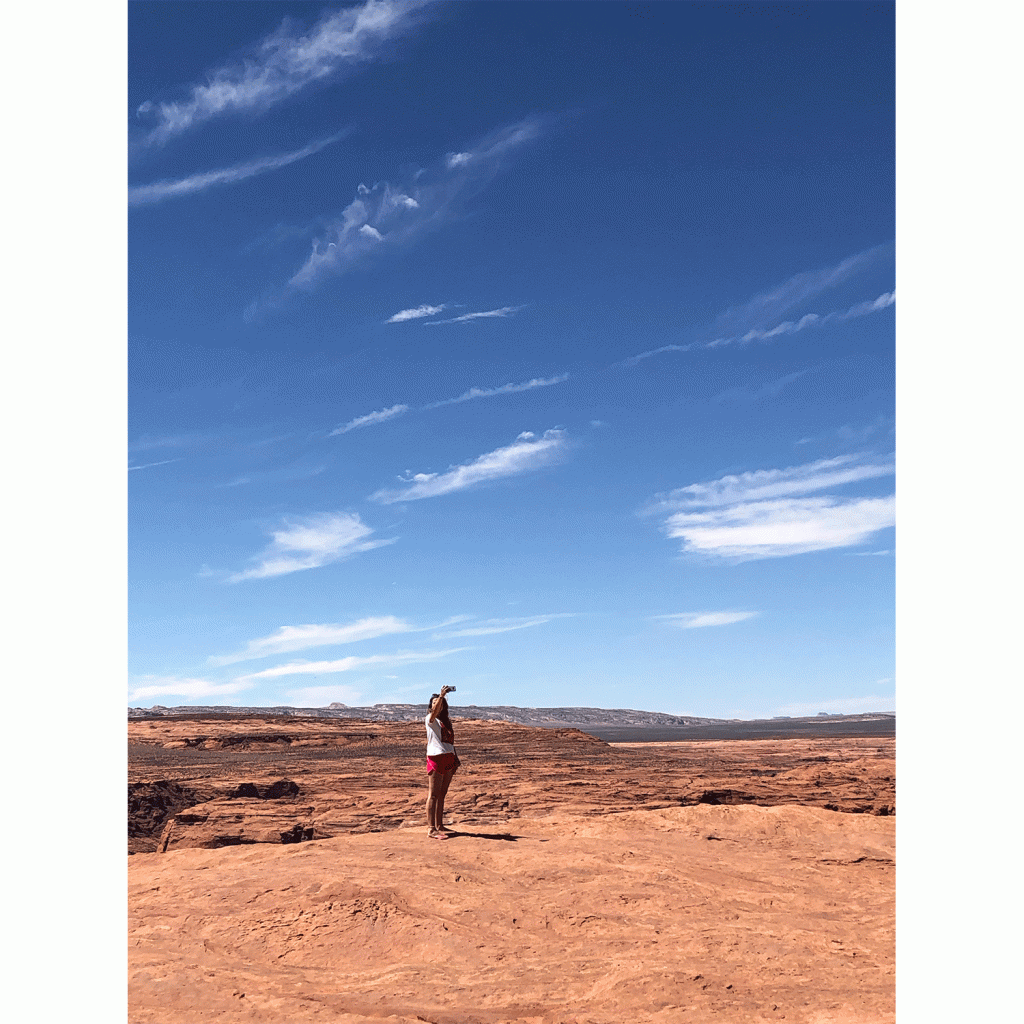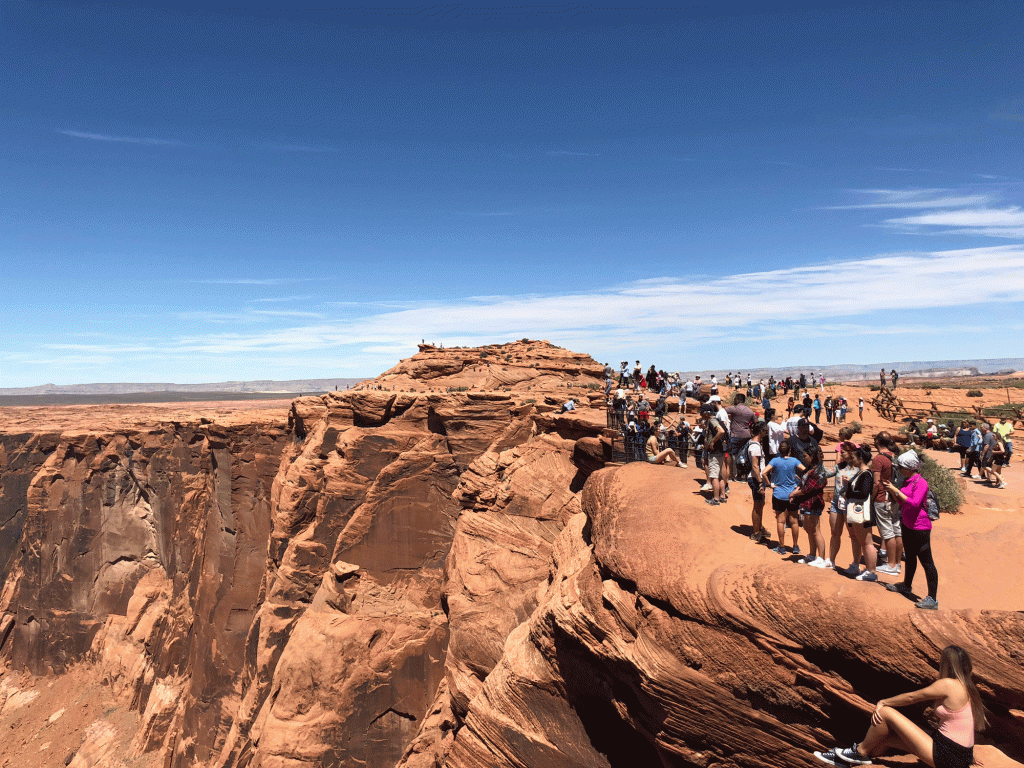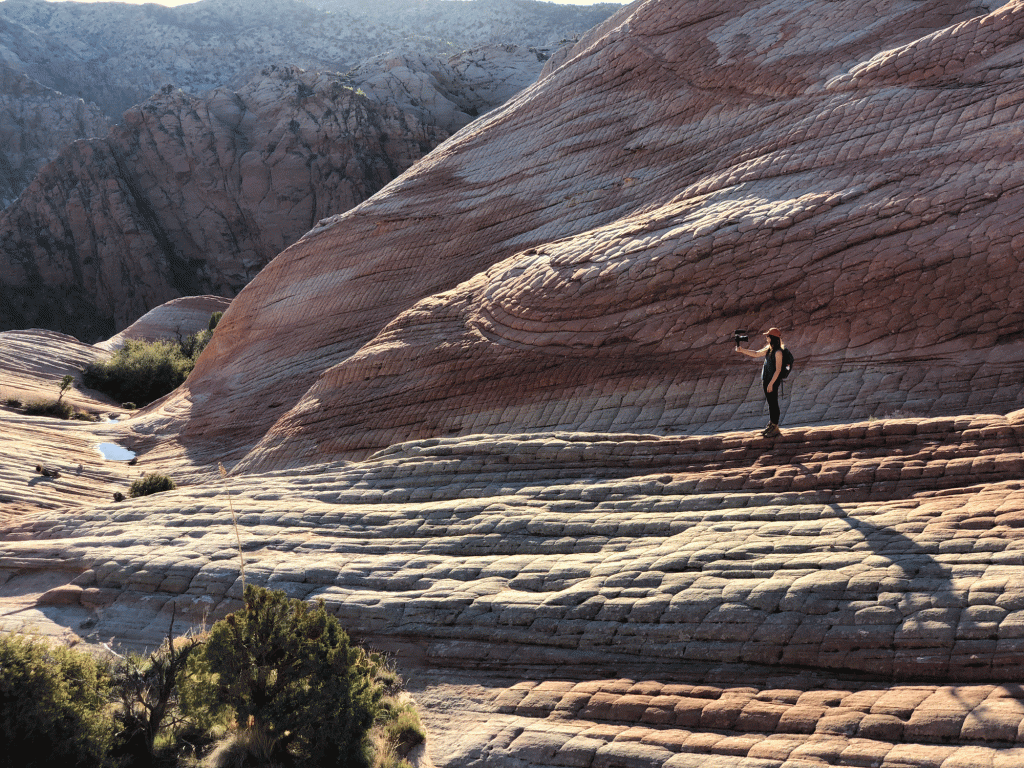As a co-op, we believe that a life outdoors is a life well lived. We’re dedicated to protecting and advocating for the lands we love, and that starts with understanding the macro issues and trends that impact these outdoor places and the people who recreate in them. The “In Our Nature” series is designed to help us all become more informed and active stewards of the environment. Have a topic you’d like us to explore? Let us know in the comments below.
Editor’s note: Related to the questions posed in the video above, the Co-op Journal was interested in unpacking the conversation around geotagging and social media, specifically. In the space below, writer Katie Boué explores both sides of the debate.
The first outdoor place I ever geotagged was Chester Frost Campground in Tennessee on June 23, 2012. It’s a tagged photo of camp food—a sloppy bowl of quinoa framed against my Coleman stove with a sliver of the campground in the background. Until that post, I’d only ever tagged photos of climbing gyms and restaurants on Instagram, despite the fact that most of my photos were of outdoor pursuits. In those days, Instagram had a feature that showed you a map of every spot you’d geotagged. I started using the feature to populate my map and create a visual collection of all the places I’d traveled. In 2016, Instagram nixed the photo map feature–but my habit of geotagging stuck.
Today, we’re talking about geotagging—tags that use location services like the global positioning system (GPS) and satellite positioning on your phone to create a piece of data linking to a specific spot. In recent years, the practice of geotagging photographs on social media has sparked a fierce debate. On one side, concerned parties say that tagged photos are inspiring more people to visit public lands than ever before, leading to the overcrowding and destruction of fragile places. On the other side, supporters argue that geotags make the outdoors more accessible and can be a tool to empower the next generation of outdoor advocates.
Geotagging and social media
When it comes to platforms like Instagram, the social media experts at Sprout Social define a geotag as “the specific location, down to the latitude and longitude, of where you’ve stored your Instagram content.” Curious about the impact geotags were having on social media users, in 2014, Sprout conducted a study among Instagrammers that showed that social posts with a geotag received 79 percent more engagement (including likes, comments and re-shares) than posts without.
Beyond the desire for likes and new followers, social media may impact the way we schedule our time outside. In a 2017 Expedia travel survey, for instance, 30 percent of Americans surveyed said they were influenced by social media when booking a trip. The following year, the National Park Service recorded more than 318 million visits, and multiple reports show visitors to public lands are contributing to overcrowding on popular trails. Could geotagging be the culprit?

This question has led some to protest the use of geotags on social media when it comes to recreation. Meanwhile, others have pushed back, arguing that geotags increase access, and that protesting them is a form of gatekeeping intended to reserve outdoor locations for elite recreationists.
But while people come down on either side of the debate, the truth is that there isn’t conclusive data to suggest that geotagging is responsible for overuse of our nation’s public lands and outdoor places.
Running the numbers
Early attempts to identify how social media influences recreation have proven inconclusive. An organization leading this work in the Adirondack Mountains, the Adirondack Council, used an 11-question survey to assess decision-making among 1,004 hikers in New York’s High Peaks region in 2018.
The results, which relied on self-reports, revealed that social media wasn’t a primary motivator for hikers when choosing where to recreate: Fewer than 50 survey respondents cited their social feeds as a source of inspiration, whereas more than 600 stated they’d set out in search of a good view. Though social platforms may not have been directly responsible for these hikers hitting the trail, it’s worth pondering: How many snapped a photo or shared an Instagram story at the summit?
Mary Godnick, a marketing and development assistant for the Adirondack Council, said she was surprised by the results. “Out of everyone surveyed, the least amount of respondents said they were motivated to pick that specific hike to share it on social media,” she observed. “However, most participants selected a hike with a view, and we know the Adirondack hiking community is very active on social media.”
Godnick said the council plans its data collection to get at the answers to questions like: “What platforms and information are people using to plan their trips to the Adirondacks? Who is providing the information [and] what Leave No Trace, safety and other information is available?”
More research is needed to understand how geotagged photos may contribute to people’s perception of wild places. During an interview for this piece, representatives from the Leave No Trace Center for Outdoor Ethics (LNT), a nonprofit that teaches people to spend time outdoors responsibly, also shared plans for a social media research study in collaboration with Pennsylvania State University in 2020.
The good, the bad and the geotag
The side effects of geotags and geolocation have been around for as long as the tools themselves. Plain and simple: geotags publicize your whereabouts—information you may or may not want others to have. I stopped posting my geotags in real-time in 2016 after a well-intentioned follower found my vehicle and left a note at a trailhead I had tagged while trail-running. What if that person hadn’t had my best interests in mind? Someone potentially wanting to cause me harm had the same level of access to my location.
When asked why she doesn’t use geotags, Brianna Madia, a full-time traveler with more than 200,000 Instagram followers and a very recognizable vehicle, told me, “I grew up in a time when you didn’t tell strangers on the internet where you were. I’m not going to draw a map on Instagram showing people how to find me in the middle of nowhere.”

But the practice has its upsides, too. Tags can make information about a place more accessible, and help educate recreationists about the lineage of a place. In 2017, Natives Outdoors founder Len Necefer started a geotagging movement to raise awareness about the ancestral names of outdoor landmarks. Now, thanks to Necefer, recreationists can see the Indigenous place names of popular destinations tagged on social media.
Scientists are also beginning to investigate how geotagged photos can be used for good, analyzing visitor behavior to aid in the development of national parks. Following a 2016 study near Turkey Mountain in Tulsa, Oklahoma, for example, researchers recommended the installation of camera windows designed to encourage visitors to photograph and post about trail conditions. On Turkey Mountain and elsewhere, tagged trail records could boost safety on public lands, especially in areas prone to heavy snow and flooding.
More tools to find public land means greater accessibility. And the more people who access and fall in love with our public lands, the more outdoor advocates we’ll have to help protect those places.
Rising tension
In 2018, the debate around geotagging and social media reached the Leave No Trace Center for Outdoor Ethics, inspiring the advocacy group to publish a blog post offering guidance about geotagging specific outdoor places on social platforms.
“We encourage outdoor enthusiasts to stop and think about their actions and the potential consequences of posting pictures, GPS data, detailed maps, etc. to social media,” the group advised. But recreationists questioned the directive, with some suggesting the guidelines contribute to a culture of gatekeeping that does little to break down barriers to access and inclusion on public lands.
On May 20, 2019, Leave No Trace updated its guidance to read: “Leave No Trace is a spectrum and there are no rights or wrongs. It’s a framework for making good decisions about enjoying the outdoors responsibly, regardless of how one chooses to do so. If outdoor enthusiasts stop and think about the potential impacts and associated consequences of a particular action, it can go a long way towards ensuring protection of our shared outdoor spaces.”
According to Executive Director Dana Watts, the group doesn’t have an official stance on geotagging.
“Leave No Trace’s social media guidance encapsulates our approach to geotagging today,” she said. “Geotagging is an ever-changing technology in the outdoors and can be a great conduit to share Leave No Trace information.”
When asked about the pushback Leave No Trace received about its social media guidance, Dean Ronzoni, the director of corporate development for LNT, and Aisla Walsh, who serves as the organization’s development and communications director, said they plan to continue to develop Leave No Trace guidance accordingly.
“Our role is to provide the best science and to develop a skills-based framework to support the science,” Watts later affirmed in an official statement.“There still isn’t a lot of research that tracks the direct environmental impacts of geotagging.”

The geotagging conversation poses big questions without definitive answers. So what can recreationists do to address concerns about the way our digital lifestyles affect our favorite outdoor places?
We have the power to shift the narrative and take accountability for the way we share on social media. Spreading information and stewardship awareness is a key tool at our digital disposal. Here are some actions you can take—based on my own experience as a social media manager and advocate in the outdoor space, as well as wisdom gleaned through interviews with other experts in the field:
-
- Include stewardship and Leave No Trace notes in your Instagram captions and stories. Camping in Moab? Consider adding a few lines about the importance of being able to identify and stay off sensitive cryptobiotic soil. Sharing a rad photo you needed a permit to take? Note that you had the permit. Taking a wildflower photo with a clever angle? Share how you were able to get the shot without disturbing the fauna.
-
- Choose who you follow and support wisely. Unfollow accounts that don’t jive with your expectations for outdoor advocacy leadership. Your feed should be a source of stoke and inspiration, not toxic digital frustration. Support individuals and brands who respect and advocate for public lands.
-
- Amplify the stories and actions of people and organizations doing good work around public lands stewardship, education and advocacy. Spread the movement!
-
- For those major grievances when we need to call in reinforcements, there are resources like the National Park Service Investigative Services that can enforce laws and park rules seen violated on social media.
Finally, the next time your thumb hovers over the “add location” button on Instagram, consider pausing to reflect: Why do you geotag? Why don’t you geotag? What are the implications, both negative and positive, of sharing this place? And how do we uphold ethical outdoor behavior without becoming gatekeepers? Here’s to more questions, more answers and more compassionate conversations as we explore our relationship with the places we love.
Photos were taken during the filming of the”In Our Nature” series by Wondercamp. All necessary permits for filming and photography were obtained.

